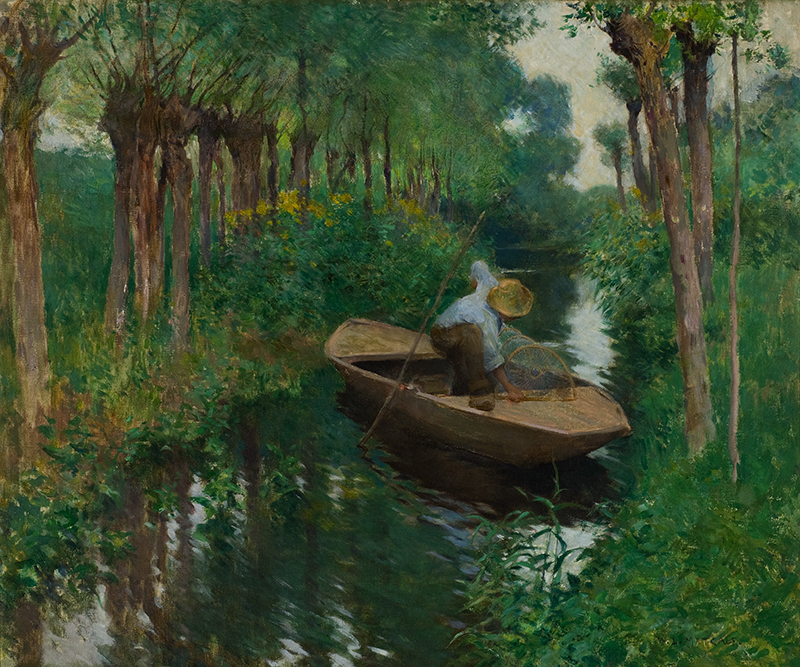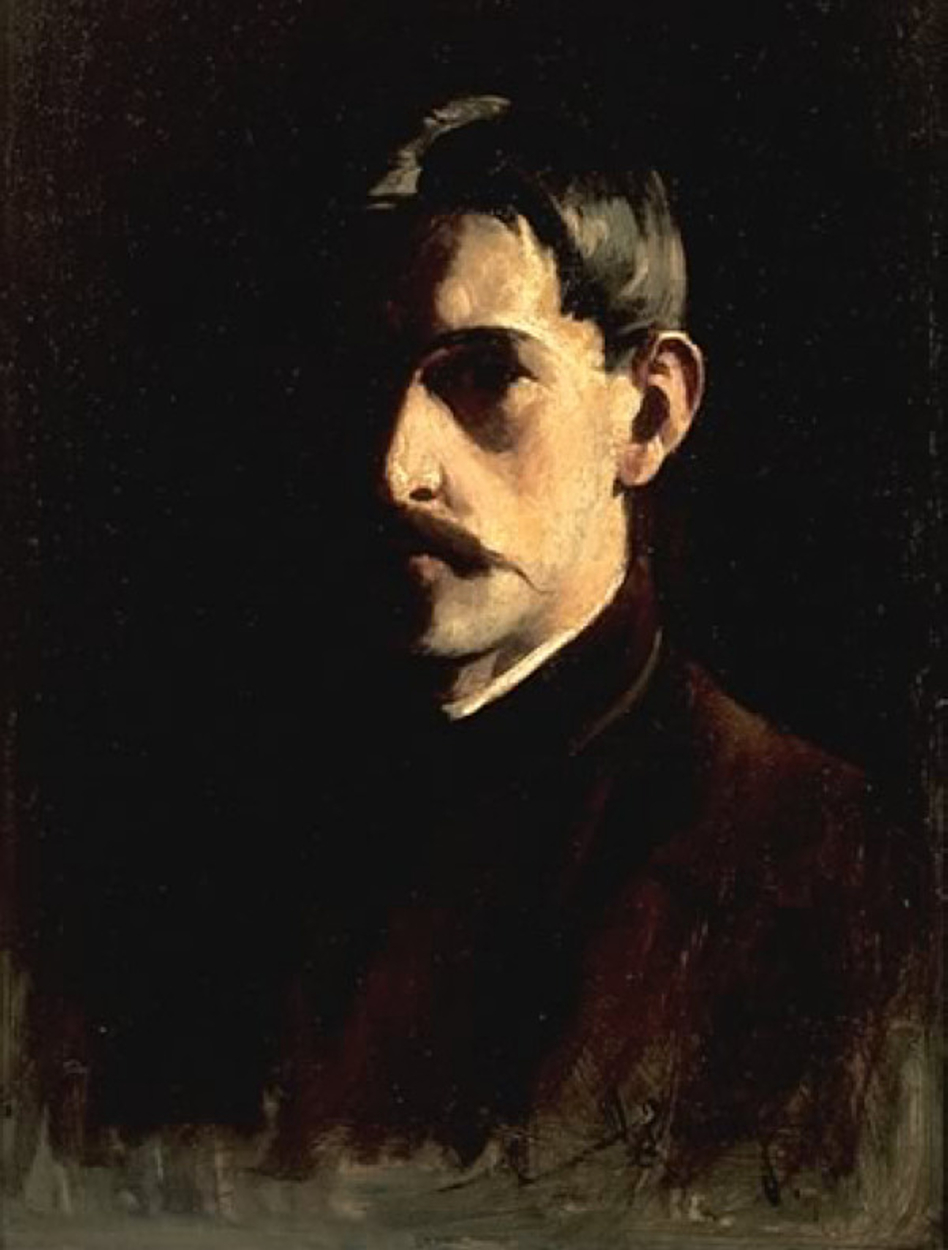



On the River
oil on canvas • 21 x 25 1/2 inches
For the next four weeks on Mondays we will be presenting masterpieces from Florence Griswold Museum centered on the home of Florence Griswold, which was the center of the Old Lyme Art Colony, the main place of development of American Impressionism. Enjoy! :)
Although the Florence Griswold Museum possesses the largest public collection of Willard L. Metcalf’s work, we did not have any paintings the artist did in Giverny until now. Metcalf was one of the first American artists to visit the French village, home to Claude Monet and to a nascent art colony formed by an international group of impressionists. Metcalf’s cabinet of natural history specimens, in FGM’s collection, includes bird eggs gathered in Giverny in May 1885, establishing the artist’s presence there before any other North American painter. He soon made Monet’s acquaintance and even tutored the artist’s son and stepson in botany and ornithology.
Metcalf would visit Giverny over the next several summers, leading up to his return to America in 1888. He executed a series of paintings of Giverny’s Epte river in 1887, examples of which we have borrowed for past exhibitions from lenders such as the University of Kentucky Art Museum and the Terra Foundation for American Art. Done en plein air, Metcalf’s Giverny paintings demonstrate rich coloring and a more pronounced contrast of light and shadow than that found in his earlier work. On the River features this same lush palette informed by Barbizon landscapes, as well as the high horizon, abrupt cropping, and diagonal lines that the Impressionists borrowed from photography and Japanese prints [to paraphrase the entry for Giverny (1887), in May Night: Willard Metcalf at Old Lyme (136)]. But unlike most of his Epte pictures, On the River includes a human figure, that of a fisherman balancing a trap on a small boat. The figure’s prominence echoes Metcalf’s earlier French works—both paintings and journalistic illustrations—in which people appear prominently, as well as the works of artists such as Jules Bastien Lepage who gave rural men and women prominence in their pictures.
In FGM’s collection, On the River plays an important role by filling a gap in our holdings of Metcalf’s works. Not only would it represent the artist’s French period, but it would also serve as an example of the stylistic and compositional elements from which he was evolving away as he embraced Impressionism in Old Lyme. One picture in our collection, Dogwood Blossoms (1906), represents the lingering French influence in Metcalf’s work through his incorporation of female figures. Although we often mention in object labels that Dogwood Blossoms includes peasant figures much like Metcalf’s European pictures and paintings by other American artists working in France, we do not have a work in the collection that illustrates that fact, as On the River could. Similarly, in our discussions of Kalmia, we emphasize the extent to which the painting demonstrates Metcalf’s shift from the more Barbizon style in which he worked in Giverny (evident in the softly painted blues and greens of the background) toward a full embrace of Impressionism (apparent in the active brushwork and impasto that articulate the laurel bush). Wouldn’t it be wonderful to make that point visually by juxtaposing On the River with Kalmia, a scene of Old Lyme’s own Epte-like Lieutenant River?
 Willard L. Metcalf
Willard L. Metcalf